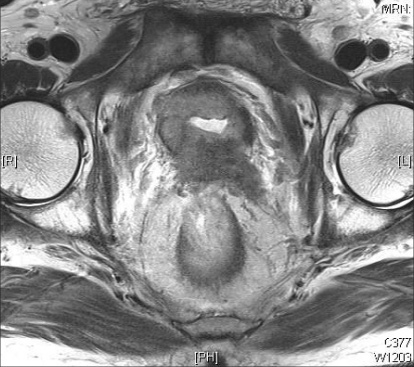
Focal Therapy for Prostate Cancer Results in Fewer Side Effects Compared to Traditional Whole Prostate Gland Treatment
-
Treatment methods are constantly emerging in the field of prostate cancer. Focal therapy has become an option in treating some men that have been diagnosed with prostate cancer.
Men with small, localized prostate tumors may be eligible for this treatment which targets just the region with prostate cancer and spares the normal prostate gland and surrounding structures from unnecessary therapy and usual consequences of treatment.
This technique can be effective to eliminate cancer without surgery. Fox Chase Cancer Center doctors are pioneering the use of this technique in the Philadelphia area.
"With advances in high-definition MRI imaging over the last five years and improved techniques for biopsies, we can better assess low-, mid- and high-risk prostate cancers. We are now customizing treatment approaches for cancers in the middle “grey zone,” where active surveillance might not be enough but surgery or radiation and the potential side effects might be too much. Focal therapy offers a new treatment option for these patients." said David Y.T. Chen, MD, FACS Associate Professor, Department of Surgical Oncology.

A black and white MRI photo of a malignant lesion of the prostate, from the National Institutes of Health. Who is eligible for this approach?
Focal therapy is an alternative treatment option for men with a small volume of clinically concerning prostate cancer that is localized within a limited region of the prostate gland. Recent advances in prostate assessment -- including multiparametric MRI scans and MRI-ultrasound fusion targeted biopsy and transperineal mapping biopsies -- have markedly increased our ability to understand the anatomic details of the prostate with high resolution. As a result, we can often confirm the location of a man’s aggressive prostate cancer with a high degree of certainty.
Many prostate cancers are appropriate for non-treatment because they are “indolent” (slow growing and nonaggressive) and can be safely managed with regular monitoring by doctors, an approach called “active surveillance.” However, men with intermediate risk tumors that are inappropriate for active surveillance may choose to eradicate the cancer with a partial gland treatment such as focal therapy.
How is the procedure done?
Focal therapy uses thermal-based tissue ablation devices, such as cryoablation, which freezes the targeted area, or High Intensity Focused Ultrasound (HIFU), which uses heat to destroy cancer cells. These treatments are outpatient procedures performed under general anesthesia, and the target zone of prostate treatment is carefully planned and confirmed in real-time using transrectal ultrasound guidance. Therapy is closely monitored to avoid unneeded treatment to the normal prostate and surrounding structures, which greatly minimize the side effects of therapy.
What are the benefits?
- Few side effects and minimal negative impact on urinary, bowel, and sexual function
- Fast recovery time
- Minimal blood loss
What are potential side effects?
As with any treatment for prostate cancer, side effects also may occur after focal therapy, depending on where the tumor is located and the region of the prostate receiving treatment. Common anticipated side effects include minor swelling, localized soreness or discomfort. As the majority of the prostate gland would not receive treatment, in contrast to a traditional whole prostate gland therapy, there should be minimal change to urinary, bowel and sexual function following focal therapy.
To find out if you might be a candidate for focal therapy or to learn more about the procedure, please contact 888-369-2427.
